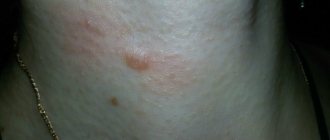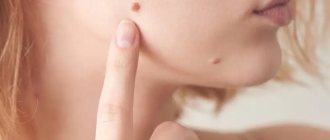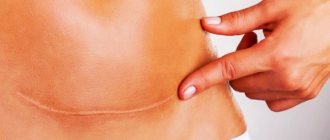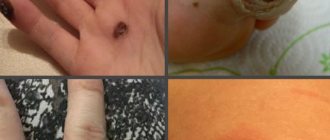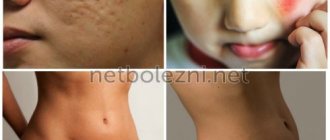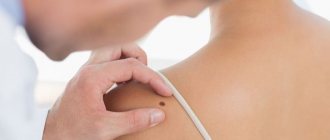03/07/2018 There is a risk of a scar appearing on the skin after surgery. The smaller the area and depth of the damage, the less likely it is to occur. Is it possible to guarantee that a scar will not appear or to cure it completely?
This is an article by Mikhail Gusarov, member of the European Academy of Dermatology and Venereology (EADV), International Dermatoscopy Society (IDS), author of more than 10 scientific publications.
What determines the risk of scarring?
The appearance of a scar and its nature depends on a number of factors:
- Depth and area of damage: if they are small, a scar may not appear at all.
- Tissue healing abilities.
- The presence of chronic diseases (for example, diabetes).
- Time for complete healing of the wound (it may increase if the wound has become infected).
The process of complete wound healing, which lasts for 21 days, ends with pathological scarring in only 33% of cases. If the process lasts more than 21 days, the probability increases to 78%.
Laser mole removal takes a long time to heal.
The healing time depends on the size of the mole, location, and individual characteristics of the regenerative processes.
If they are small in size, up to 0.5 cm, moles heal in 10-14 days; if they are larger than 1 cm, regeneration takes up to 3-4 weeks.
In places with good blood supply and in open areas of the body, healing is faster, up to 14 days. In places that are subject to friction (belt, bra line, groin area), get wet (perineum, armpits), have thick skin and poor blood flow (sole, palm), healing takes up to 4 weeks.
How does a wound heal?
The following phases of wound healing are distinguished:
- Inflammation. It begins immediately after the injury and lasts about 2-3 days, during this phase it is necessary to clean the wound and carry out anti-infective measures.
- Proliferation. From 3 days to 2 weeks. It is necessary to maintain the absence of infection and adequate hydration.
- The appearance of a scar. From 2 weeks to several years. During this phase, measures are taken to correct the scar depending on its type. [12]
Prices:
Prices for removal of formations
| Consultation with a dermato-oncologist surgeon | FOR FREE |
| Dermatoscopy: | |
| - for all education | 500 rub. |
| Skin mapping: | |
| 1-3 formations | 500 rub. |
| 4-10 formations | 2,000 rub. |
| 11-25 formations | 4,000 rub. |
| 26-50 formations | 6,000 rub. |
| Histological examination: | |
| Histology Dialab | 1,500 rub. |
| Histology Hemotest | 3,000 rub. |
| Revision of glasses by expert morphologist Prof. Mordovtseva V.V. | 6,000 rub. |
| Local anesthesia: | |
| - injection | 300 rub. |
| - cream | 300 rub. |
| Laser removal of 1 formation on the skin: | |
| diameter: | |
| - up to 1 mm | 100 rub. |
| - up to 2 mm | 400 rub. |
| - up to 3 mm | 600 rub. |
| - up to 4 mm | 700 rub. |
| — up to 5 mm | 800 rub. |
| - up to 6 mm | 900 rub. |
| - up to 7 mm | 1,000 rub. |
| - up to 8 mm | 1,100 rub. |
| - up to 9 mm | 1,200 rub. |
| - up to 10 mm | 1,300 rub. |
| Laser removal of 1 formation on the skin of the eyelids, mucous membranes, plantar and periungual: | |
| - up to 1 mm | 300 rub. |
| - up to 2 mm | 400 rub. |
| - up to 3 mm | 700 rub. |
| - up to 4 mm | 800 rub. |
| — up to 5 mm | 900 rub. |
| - up to 6 mm | 1,000 rub. |
| - up to 7 mm | 1,100 rub. |
| - up to 8 mm | 1,200 rub. |
| - up to 9 mm | 1,300 rub. |
| - up to 10 mm | 1,400 rub. |
| Chalazion removal | 7,000 rub. |
| Laser removal of 1 formation on the ciliary edge of the eyelids: | |
| - up to 1 mm | 500 rub. |
| - up to 2 mm | 1,000 rub. |
| - up to 3 mm | 1,500 rub. |
| - up to 4 mm | 2,000 rub. |
| — up to 5 mm | 2,500 rub. |
| Excision of formations with suturing: | |
| Excision of formations with 5 mm sutures on the body | 1,500 rub. |
| Excision of formations with sutures on the face M-zone (cheeks, forehead, chin, temple, scalp) - 5 mm | 2,500 rub. |
| Excision of formations with sutures on the face H-zone (nose, eyelids, lips, ears) - 5 mm | 5,000 rub. |
| Excision of formations with 5 mm sutures on the hands and feet | 2,500 rub. |
| Excision of formations using the Mohs method + cost of wound closure: | 30,000 rub. |
| on the face M-zone (cheeks, forehead, chin, temple, scalp) - 5 mm | 2,500 rub. |
| on the face H-zone (nose, eyelids, lips, ears) - 5 mm | 5,000 rub. |
| Removal of molluscum contagiosum in children under 10 years of age: | |
| - for one education | 300 rub. |
| Laser correction of ingrown toenails (one side of the nail): | |
| Laser correction with removal of the growth zone | 3,500 rub. |
| Resection of an ingrown nail without removing the growth zone | 1,900 rub. |
| Removing the thumbnail | 1,700 rub. |
| Removal of the nail on the 2nd to 5th finger | 1,000 rub. |
| Earlobe correction: | |
| — After earrings (for 1 side) | 3,000-6,000 rub. |
| — Correction of the shape of the lobes, including tunnels (for 1 side) | 10,000 rub. |
| Excision of scars (per 1 cm incision): | |
| Excision of scars on the body, 1 cm of scar | 3,000 rub. |
| Excision of scars on the face and neck, 1 cm of scar | 5,000 rub. |
| Correction of body scar with local tissues, 1 cm of scar | 5,000 rub. |
| Correction of face and neck scars with local tissues, 1 cm of scar | 10,000 rub. |
| Correction of retracted scars with Collost filler 7% - 1.5 ml | 13,000 rub. |
| Correction of retracted scars with Collost filler 15% - 1.5 ml | 18,000 rub. |
| Collost micro – 150 mg | 20,000 rub. |
| Spherogel Lights 0.5 ml | 7,000 rub. |
| Spherogel Lights 1.0 ml | 12,000 rub. |
| Spherogel Medium 0.5 ml | 9,000 rub. |
| Spherogel Medium 1.0 ml | 16,000 rub. |
| Scar hormone therapy (Diprospan) | 1,300 rub. |
| Laser resurfacing CO2 1 cm2 | 2,000 rub. |
| Biopolymer removal | 40,000 rub. |
Is a scar a reason to go to the doctor?
Reasons for visiting a doctor:
- aesthetic dissatisfaction;
- itching and pain in the scar area;
- the formation of deformities and contractures, which can lead to disability.
If scar tissue begins to develop pathologically and causes a keloid scar, it is better to consult a doctor.
There are factors that increase the risk of developing a scar:
- genetic predisposition;
- race (black patients are more likely to develop keloids);
- localization of injury (when removing tumors in the chest, neck and shoulders, the likelihood of keloid scars is higher);
- age (the formation of keloid scars is typical for young people). [3]
Before and after. How we remove scars
Laser removal of tumors. Possible complications after the procedure
After surgery, you need to carefully monitor the operated area of skin.
Because after surgery, symptoms may appear that require immediate medical attention or additional treatment.
Symptoms:
- Itching, excessive wetting of the wound.
- Bleeding from the wound.
- Heat.
- Pus is released.
- Skin inflammation lasting several days.
Laser removal of tumors. Consequences
It happens that the healing process has slight deviations from the norm, but they can be eliminated with additional treatment.
Let's consider the possible consequences:
- Small blisters on the area of skin where surgery was performed. Occurs when exposed to particularly sensitive skin. Over time, the blisters are replaced by barely noticeable scars.
- The occurrence of hypopigmentation - a light spot forms at the site where the neoplasm was located. Such a defect is a consequence if the removal of the tumor somehow affected the deep layers of the skin and if the rule of prohibiting visiting a solarium and prolonged exposure to the sun is neglected. The white spot will disappear on its own within two years.
- Recurrence of nevus (moles/papillomas). This situation is possible if laser removal of a tumor is performed by an inexperienced specialist and the papilloma/mole is not completely removed. Do not be afraid, this case does not cause harm to health. If the tumor reappears, it can be removed again.
- If the patient has diseases such as herpes and acne, then activation of inflammatory processes is possible.
- The appearance of a depression at the site where the removal was carried out. The situation arises due to the low rate of tissue restoration. The scar is barely noticeable and does not require intervention, since it smoothes out on its own over time.
- The appearance of a bulge at the site where the removal was performed, darker in color than the skin at the site. If this phenomenon does not smooth out within six months, then you need to consult your doctor.
How to prevent the appearance of a keloid scar?
There are several ways to prevent the appearance of a keloid scar.
- If surgical excision of the tumor is performed, techniques that minimize tension on the wound edges should be used during suturing.
- Mechanical stabilization - the use of special silicone plates or the use of silicone-based gels.
- The use of various medications containing flavonoids - substances obtained naturally from various plants (for example, onion extract). However, data on the effectiveness of this group of drugs is contradictory.
- Pressure therapy (compression) – within 15–40 mm Hg. Art. for 23 hours a day for 6 months. Data on the effectiveness of this method are also conflicting.
- Glucocorticosteroids (GCS) - can be used as creams or ointments in the initial stages of scar formation and to prevent its formation, as well as in the form of injections into scar tissue. [4]
How does laser mole removal work?
The procedure for removing moles is standard and includes several stages:
- Examination of the skin by a dermatologist to exclude the presence of signs of melanoma. There is a classification of 5 criteria for which the doctor must examine and check the formation. Shape, size, color, surrounding tissue, density. Sometimes dermatoscopy (examination of an element under multiple magnification) can be used for diagnosis. Having completely convinced that the formation is benign, the specialist begins the removal procedure itself.
- Consultation before the procedure. The dermatologist talks about how the procedure will take place and the symptoms that will accompany it. Possible complications and limitations that will occur after the manipulation.
- Signing the patient's informed consent for the administration of anesthetic and laser vaporization.
- Next, he proceeds directly to removing the mole. The area is treated with a skin antiseptic. An anesthetic injection is given. After complete freezing, the mole is removed within healthy tissue using a CO laser. Repeated treatment with a disinfecting solution is carried out.
- Recommendations for care.
What if a scar appears?
Once scar tissue has formed, unfortunately, it will not be possible to completely get rid of it. All medical actions in this case will be aimed at minimizing the manifestations of the scar. The following methods are used to treat formed keloids:
- GCS injections are a popular and effective method for treating keloid and hypertrophic scars. A GCS solution is injected into the scar tissue 1–2 times a month until the expected results appear. Unfortunately, with excessive use of the drug, skin atrophy may develop at the injection site, telangiectasia or an atrophic scar may appear. [4]
- Surgical excision of the scar - you should not resort to this method as the only remedy, since it always ends in a relapse that exceeds the existing scar in area. This method can be resorted to after previous long-term therapy carried out in various ways. [4]
- Cryotherapy is the treatment of scars with liquid nitrogen. There are various methods of its use: spray, contact method and intralesional cryoprobe. The latter method is more effective. In addition, the combination of cryotherapy with GCS injections gives the best result compared to others. [4]
- Laser treatment – various lasers are used. Nd:YAG laser with a wavelength of 1,064 nm is used to target the vessels of scar tissue. In addition, CO2 and Er:YAG lasers are actively used in fractional mode. But it is not recommended to use ablative lasers (CO2 and Er:YAG) as the only treatment method, since in this case there is a high probability of relapse. [5]
A dye laser (PDL) with a wavelength of 585 nm is also considered effective. [6]
There is evidence of the effective use of CO2 laser in fractional mode during surgery to improve the cosmetic outcome of healing. [7]
- Ointment with 5-fluorouracil for the treatment of scars, but it is not sold in Russia. [4]
- Botulinum toxin type A is used to weaken the tension of the wound edges by reducing muscle activity. Injections are given immediately after surgery. [8]
- Imiquimod cream is recommended for use after surgical excision of a scar to minimize the likelihood of recurrence. [9]
- Other methods - bleomycin, verapamil, TGF-β, interferon, tacrolimus, sirolimus, tamoxifen, epidermal growth factor, retinoic acid, tamoxifen and other drugs are also considered effective for the treatment of scars. [10]
Kinds
The unifying name we use does not convey the full scope of the problem. Violation of the integrity and structure of the epidermis occurs for completely different reasons and has different consequences. That is why it is first necessary to determine the species. The correction option that the doctor ultimately chooses depends on this: from surgical intervention to a visit to a cosmetologist. Some will have to use absorbable ointments, while a number of patients will undergo gentle procedures.
Normotrophic scars
People often perceive such irregularities as traces of damage that once existed on the skin. Such defects, as a rule, are light, but do not differ significantly from the general tone of the epidermis, do not protrude above the surface of the skin, and do not “sink.”
Atrophic scars
As a rule, their owners call them “deep”, the level of damage is below the general surface of the skin. This is a consequence of a connective tissue defect, a lack of collagen and elastin, as well as other proteins that form the internal framework of the skin. Their color is lighter than the general tone of the epidermis, sometimes almost white, and sensitivity in the area of damage, as a rule, decreases. Often this is a consequence of scratching itchy areas on the skin, the formation of pustules where there was acne. Considering that about 30% of cases end in complications, this is a very pressing problem. Doctors pay attention to the location: the back and chest, there may also be changes in pigmentation, and dark spots appear. During therapy and searching for an option, be prepared for the fact that a specialist will carry out manipulations aimed primarily at leveling the relief, and this can be achieved in different ways.
Hypertrophic
As a rule, damage of this type occurs after injury or surgery. They do not go beyond the initial violation of the integrity of the skin, do not occupy a larger area than a surgical incision or an accidental cut, but are clearly visible, can rise above the surface, and differ in color. These injuries cause psychological discomfort, which is why patients with hypertrophied scars regularly ask how to remove old scars on the body. Often people with such problems have immunity disorders, inflammation that occurs after damage, or the addition of a secondary infection. But most often they do not cause severe physical discomfort.
Keloid scars
If the wound healing process does not follow the “wrong” scenario, a keloid may form. Outwardly, it resembles a tumor, usually grows beyond the initial damage, and the process is extended over time and can last quite a long time. Unfortunately, this type of damage causes great discomfort to patients, causing itching and a feeling that the skin is tight.
It is important to remember that some people are prone to what is called keloid disease, where large defects form spontaneously in the absence of injury. Sometimes they can form at the site of a bruise or compression. The clinical picture depends on many factors - the patient’s age, location, area of injury (if present), and so on.
Which method is the most effective?
Unfortunately, there is no most effective treatment for scars. The most effective is considered to be a combination of various methods, which is always selected individually. Injections of corticosteroids into hypertrophic or keloid scars are considered an accessible, effective and inexpensive method.
Atrophic scars are distinguished separately: for their correction, planar ablative lasers, fractional ablative lasers (CO2 and Er:YAG), various combinations of lasers (fractional +PDL, Qsw+fractional lasers), collagen, fillers with hyaluronic acid, PRP therapy, microneedling are used. , peeling and a number of other methods [11, 12]
Previously, the dermabrasion method was used to correct atrophic scars, but now it is practically not used, since it is associated with the risk of side effects: bacterial or viral complications, telangiectasia, hyperpigmentation, a long rehabilitation period, as well as hypertrophic or keloid scars.
How not to treat scars
Incorrect treatment, in addition to wasting money and time, can lead to enlargement of the scar. What could cause this:
- non-compliance with doctor’s recommendations after removal or self-medication;
- traumatization and irritation of the wound can lead to relapse;
- non-compliance with prescribed antiseptic methods;
- removal of the crust that has formed at the site of removal: under it the restoration process is more efficient.
There is not enough information in scientific sources to evaluate the effectiveness of folk remedies in the treatment of scars. From my experience I can say that I have not seen a single patient for whom folk remedies produced any significant positive changes. And in fairness, it’s worth saying that I rarely encounter the use of folk remedies in the treatment of scars.
Medical - advantages of ordering laser resurfacing
Our clinic uses advanced laser devices to quickly, effectively, painlessly eliminate scars after removing moles on the face. We provide professional consultations to patients, set reasonable prices for all types of minimally invasive treatments, use high-quality medications, and have extensive experience.
Make an appointment with us for a procedure for removing scars left from a nevus. Our experienced specialists will make your body beautiful by eliminating unwanted pigment spots. We are waiting for a call.
Bibliography:
- J Am Acad Dermatol. 2016 Apr; 74(4): 607–25; quiz 625–6. doi: 10.1016/j. jaad. 2015.08.070. Wound healing and treating wounds: Chronic wound care and management. Powers JG, Higham C, Broussard K, Phillips TJ.
- J Am Acad Dermatol. 2016 Apr; 74(4): 589–605; quiz 605–6. doi: 10.1016/j. jaad. 2015.08.068. Wound healing and treating wounds: Differential diagnosis and evaluation of chronic wounds. Morton LM, Phillips TJ.
- Ann Hum Genet. 2022 Feb 27. doi: 10.1111/ahg.12245. Gene-based evaluation of low-frequency variation and genetically-predicted gene expression impacting risk of keloid formation. Hellwege JN, Russell SB, Williams SM, Edwards TL, Velez Edwards DR.
- Int. J. Mol. Sci. 2022, 19(3), 711; doi: 10.3390/ijms19030711. Recent Understandings of Biology, Prophylaxis and Treatment Strategies for Hypertrophic Scars and Keloids. Ho Jun Lee, Yong Ju Jang.
- Br J Dermatol. 2011 Nov; 165(5): 934-42. doi: 10.1111/j.1365-2133.2011.10492.x. Laser and intense pulsed light therapy for the treatment of hypertrophic scars: a systematic review. Vrijman C, van Drooge AM, Limpens J, Bos JD, van der Veen JP, Spuls PI, Wolkerstorfer A.
- Laser Ther. 2013 Dec 30; 22(4): 255–260. doi: 10.5978/islsm.13-OR-20 Laser Scar Management Technique. Takafumi Ohshiro, Toshio Ohshiro, and Katsumi Sasaki
- Arch Dermatol. 2011 Sep;147(9):1108-10. doi: 10.1001/archdermatol.2011.248. A randomized split-scar study of intraoperative treatment of surgical wound edges to minimize scarring. Ozog DM, Moy RL.
- Plast Reconstr Surg. 2022 Mar;141(3):646-650. doi: 10.1097/PRS.0000000000004110. Effects of Botulinum Toxin on Improving Facial Surgical Scars: A Prospective, Split-Scar, Double-Blind, Randomized Controlled Trial. Hu L, Zou Y, Chang SJ, Qiu Y, Chen H, Gang M, Jin Y, Lin X.
- Curr Pharm Des. 2017;23(15):2268-2275. doi: 10.2174/1381612822666161025144434. The Effectiveness of Topical Anti-scarring Agents and a Novel Combined Process on Cutaneous Scar Management. Fang QQ, Chen CY, Zhang MX, Huang CL, Wang XW, Xu JH, Wu LH, Zhang LY, Tan WQ.
- Dermatol Surg. 2022 Jan; 43 Suppl 1:S3-S18. doi: 10.1097/DSS.0000000000000819. Keloids and Hypertrophic Scars: Pathophysiology, Classification, and Treatment. Berman B, Maderal A, Raphael B.
- Clinical and Experimental Dermatology, June 1, 2013. Combination of intense pulsed light and fractional CO2 laser treatments for patients with acne with inflammatory and scarring lesions. B. Wang, Y. Wu.
- Skinmed. 2022 Aug 1; 15(4):271-276. eCollection 2022. Techniques for Optimizing Surgical Scars, Part 1: Wound Healing and Depressed/Atrophic Scars. Konda S, Potter K, Ren VZ, Wang AL, Srinivasan A, Chilukuri S.
